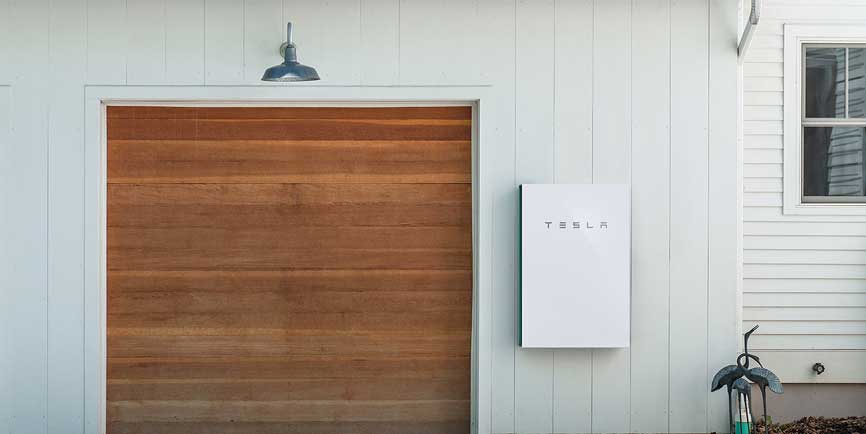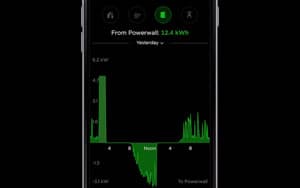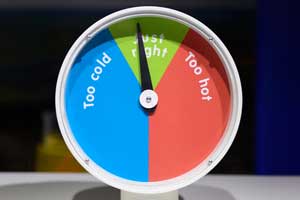Owning Storage

Energy Saving Guide

Battery storage owners guide
Now your home has batteries included here are the things you can do to make the most of it.
This guide breaks down how owners can enjoy maximum value from their battery storage. With tips on choosing the right energy plan, price arbitrage opportunities and joining VPPs to battery cycling strategies and more. See our Buyers guide to Battery storage for information about storage technologies, system costs and payback. Plus what to look for when you’re in the market to add energy storage.
Getting the best from battery storage
1. Finding the best electricity plans for battery
With a typical solar battery system, households will only be using a small amount of energy from the grid. As a result, any electricity bills will be much lower. But you still don’t want to pay more than you need to. Here’s what to look for when shopping for an electricity deal. Plus an opportunity to use your battery storage to buy low and sell high!
Compare thoroughly for your usage and export
Electricity retailers know that big solar feed-in tariffs get attention. However, the catch is these plans typically come with inflated usage charges to offset the high (and often loss-making) feed-in tariffs. The solution is to compare accurately using your unique usage and solar export. You’ll want to factor in the pricing, discounts, feed-in tariffs, restrictions and conditions. Then with the total cost of each deal for your situation, you can see the plan that stacks up best.
WATTever’s comprehensive electricity comparison does this, including all publicly listed plans and retailers to support battery owners finding the cheapest deal for their situation. We even show plans only available to those with battery storage.

Switch to a Time of Use tariff
Solar households will often be on a Time of Use tariff where the electricity price varies through the day. If not, this is a move that most battery homes should make. While peak rates for Time of Use plans are more expensive than a flat Anytime Tariff, the cost of electricity for off-peak or shoulder periods is lower. A sufficiently sized battery will shield a home from higher peak costs. That’s because solar powers daytime energy needs and any excess can be stored and used in the early evening when peak time of use rates apply (usually up to 8-9 pm on weekdays). Moving to a time of use tariff, also lets you buy lower-cost grid power if the battery capacity isn’t enough to cover you through the night. You can even fill the battery with cheaper off-peak electricity if there won’t be enough solar to fill the battery during the day. A Time Of Use tariff also provides more windows for time-shifting and accessing cheaper electricity. Either by running appliance from solar during daylight hours or later during off-peak hours when grid electricity is at its most affordable.
Time of Use tariffs give you access to cheaper grid power.
Solar battery arbitrage
By buying off-peak energy and saving it for use during peak times, households can avoid paying for the most expensive electricity. Or they can even ‘sell it back’ into the grid from the battery. We’ve coined the phrase ‘solar arbitrage’ to describe when the feed-in credit is higher than the cost of grid electricity. There are currently a few plans available where the feed-in tariff is higher than the off-peak rate. In this scenario, you’re better off financially to charge your battery from off-peak electricity overnight and export more solar during the day at the high feed-in tariff. These plans also make smaller systems viable and cycle larger batteries less as you only need sufficient battery to cover peak (and shoulder periods), i.e. up till 9 or 10 pm. What are the energy plans that work out best for solar arbitrage? Check my article for a complete list of current publicly-listed electricity plans where the feed-in tariff exceeds the cheapest cost to buy from the grid. The blog post also unpacks the solar arbitrage strategy, plus the positives and negatives. Eventually, as feed-in tariffs fall, this opportunity will disappear.
Make the most of your battery.
2. Joining a Virtual Power Plant (VPP)
The electricity grid is changing. With two and a half million solar homes, the excess power generated can be better managed to benefit everyone. A Virtual Power Plant (VPP) brings together hundreds or thousands of battery owners to create the effect of a massive battery. This way, excess daytime solar electricity can be stored and used later when needed. Like at periods of high demand or to avoid local network outages. Energy retailers pay participating households to access the energy they store, so it can be released from the VPP and sent into the grid.
Retailer VPPs can provide incentives and payments for storage owners, helping to offset the cost of their system. Around ten retailers offer VPPs including Amber, AGL, Origin Energy, ENGIE and EnergyAustralia. These programs provide solar battery households with upfront and ongoing credits to connect compatible batteries. You can compare Retailer VPP offers here.
Installer VPPs are exclusive program available to households that buy a battery through an installer – such as Reposit Power or ShineHub
If you have a specific VPP scheme in mind, you’ll want to check this out before buying your battery.

Help power the grid and be rewarded.
3. Energy-saving tips for battery owners
Below are some actions you can take to maximise your use of solar energy and your battery while avoiding having to buy electricity.
Guilt-free A/C
A PV system is at maximum generating capacity around midday, so it makes sense to use it. Set the timer on air conditioners to cool the house in summer or warm in winter during the day. This way you’ll return to an inviting home which should last into the evening, cutting the need to buy electricity from the grid when prices are high. Then less energy will be needed from your battery as you use less air conditioning after the sun goes down.
Get shifty with Appliances
Batteries reduce the need to shift loads to solar hours. However, it’s still worth doing. That’s because by automating and shifting loads to the daytime, you free up more battery capacity for use in peak hours and overnight. Why pay for energy! Laundry appliances offer an excellent opportunity for load shifting if you can be flexible around when you wash and dry clothes. Dishwashers are also ideal appliances to run during daylight hours powered from your solar. Use the Start Delay function to schedule things to run during the solar window.
Solar PV not Solar Water heaters
With a rooftop PV system, you might consider installing an electrical diverter to push any excess solar to your electric hot water unit or schedule a heat pump to run in the middle of the day. Water heating is very energy-intensive, so it’s best done during the peak solar window when power is likely to be plentiful.
Save it for a rainy day
The sun doesn’t always shine – which is kryptonite to any solar set up. The battery becomes the hero at these times. If the weather forecast for tomorrow is overcast, battery storage can be programmed to pre-charge with off-peak electricity for later use when tariffs are higher. Batteries can be set manually to do a ‘forced charge’ or controlled via automated services.
4. Programming & Monitoring
Keep the program up to date
When a household’s energy use changes, it can make sense to have the battery schedule updated. This way, the batteries cycle can be optimised to the homes’ latest energy needs. You’ll want to understand when energy is used and if any solar energy is being exported. Where there is solar exported; the battery filled but not stretching to cover the early evening – look at tactics to shift energy use earlier into the solar peak. In the case where there is no exported solar and battery runs short, also try shifting energy use into the solar window. Plus, you can fill the battery in the early morning with cheaper off-peak electricity to access later in the evening.
Monitoring the battery
To check how a battery storage system is performing there’s a range of tools available. Some ‘out of the box’ tools are as simple as an LCD on the battery inverter indicating the operating mode and charge state. Others are more sophisticated, accompanied by online tools or mobile apps. The Tesla Powerwall interface is a benchmark, with a user-friendly design and critical information displayed in a mobile app. Or you can dig deeper.
Someone to watch over me
Specialised monitoring tools such as Solar Analytics and carbonTRACK help owners to keep an eye on their battery and it’s performance. Or choose a smart battery add-on systems such as Reposit Power that expertly optimises and controls your storage. Like having the system automatically draw off-peak power from the grid ahead of a cloudy day when little or no solar would be available to fill the battery.
5. Cycling and Maintenance
Don’t overwork the battery
How long a battery lasts is dependent on how it’s used. Heavy cycling can shorten its lifespan. It can also reduce the warranty period if the battery is charged and discharged more than the recommended level for the system. Generally, once a day cycling (from 100% to empty to 100%) is covered by warranty. When you’re programming your battery to do more than that, consider the number of warrantied cycles.
Not too hot. Not too cold
If a battery runs for prolonged periods in temperatures that are too hot or too cold, it’s life can be cut short. Equally, wide extremes in temperature over a short period aren’t good for battery longevity. Locate the battery in a place where the ambient temperature can be as constant as possible. For batteries installed inside a garage, consider adding some insulation to the back of the garage door. Insulation can help moderate temperature extremes.
Know the warning signs
The battery management system (BMS) continually checks the cells to make sure the temperature and charge state is safe. If there’s a risk of overheating, the battery will even shut down. The management system in your storage system should indicate if there are problems with the health of the system. Follow the procedures and arrange a service call if you receive an alert.










